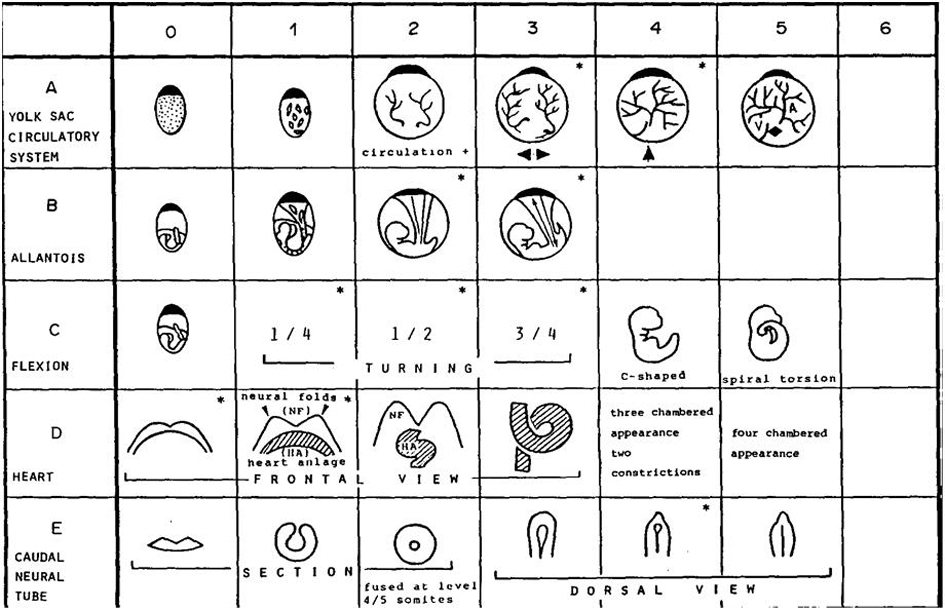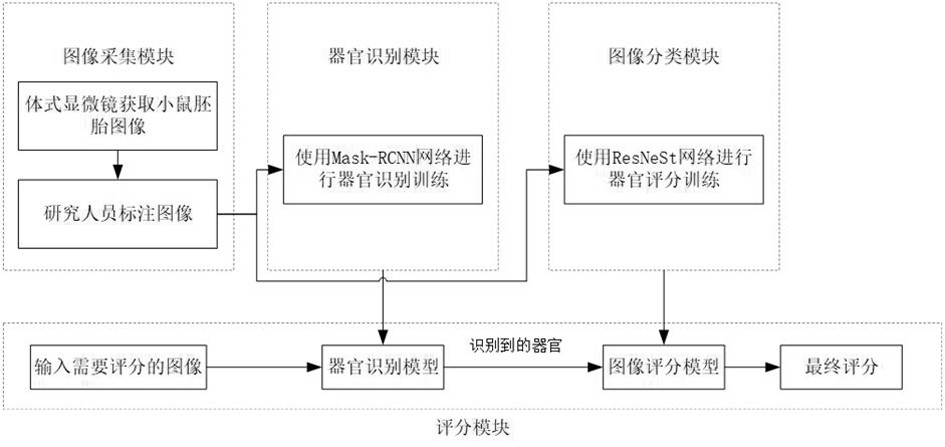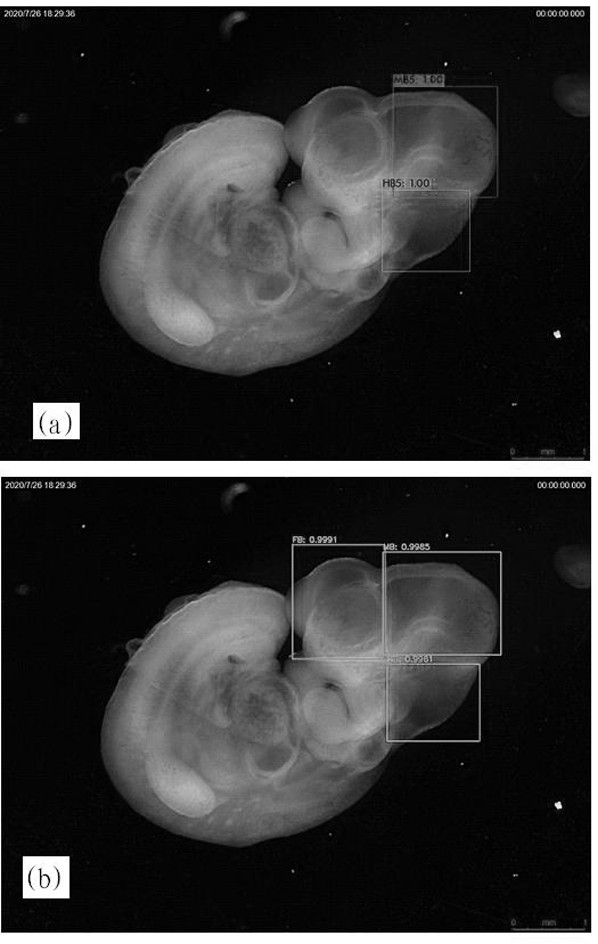Mouse embryonic organ recognition and scoring method and system
A mouse embryo and organ technology, applied in the field of artificial intelligence-assisted basic medical research, can solve the problems of high cost and low consistency of scoring
- Summary
- Abstract
- Description
- Claims
- Application Information
AI Technical Summary
Problems solved by technology
Method used
Image
Examples
Embodiment 1
[0043] Such as figure 2 As shown, Embodiment 1 of the present invention provides a mouse embryo organ recognition and scoring method, comprising the following steps:
[0044] S1. Collect the original images of mouse embryos at different stages, and manually label the organs in the images with names and development scores. Set each organ label box and organ name on the image when labeling.
[0045] Specifically, for the images of mouse embryos at different stages captured by a stereo microscope, professional basic medical researchers annotate the organ location and developmental score of each embryo image, and the annotated files are saved locally on the computer.
[0046] First, professional basic medical researchers cultivate mice by themselves. After the mice are conceived, the embryos are removed according to the number of days of development, and the in vitro embryos at different stages are photographed using a stereo microscope. The captured images are saved to the loc...
Embodiment 2
[0073] Such as figure 2As shown, Embodiment 2 of the present invention provides a mouse embryo organ recognition and scoring system, including:
[0074] Image collection module: used to collect embryo images;
[0075] Organ recognition module: used to train the Mask-RCNN network through the marked embryo image to obtain an organ recognition model; the organ recognition model is used to recognize the embryo image to be recognized to obtain each organ or tissue in the embryo image , and intercept it from the image and save it by category;
[0076] Image classification module: including a plurality of convolutional neural network models, which are used to train the convolutional neural network models separately through different embryonic organ images to obtain image scoring models for each organ, and the image scoring models are used to classify different embryonic organ images respectively. The organs are classified and identified, and their scoring results are obtained;
...
PUM
 Login to View More
Login to View More Abstract
Description
Claims
Application Information
 Login to View More
Login to View More - R&D
- Intellectual Property
- Life Sciences
- Materials
- Tech Scout
- Unparalleled Data Quality
- Higher Quality Content
- 60% Fewer Hallucinations
Browse by: Latest US Patents, China's latest patents, Technical Efficacy Thesaurus, Application Domain, Technology Topic, Popular Technical Reports.
© 2025 PatSnap. All rights reserved.Legal|Privacy policy|Modern Slavery Act Transparency Statement|Sitemap|About US| Contact US: help@patsnap.com



